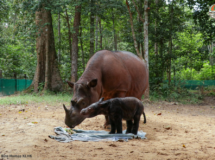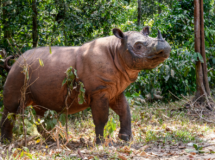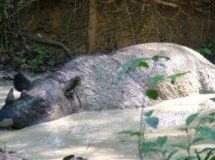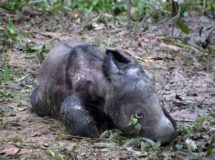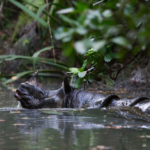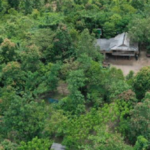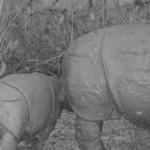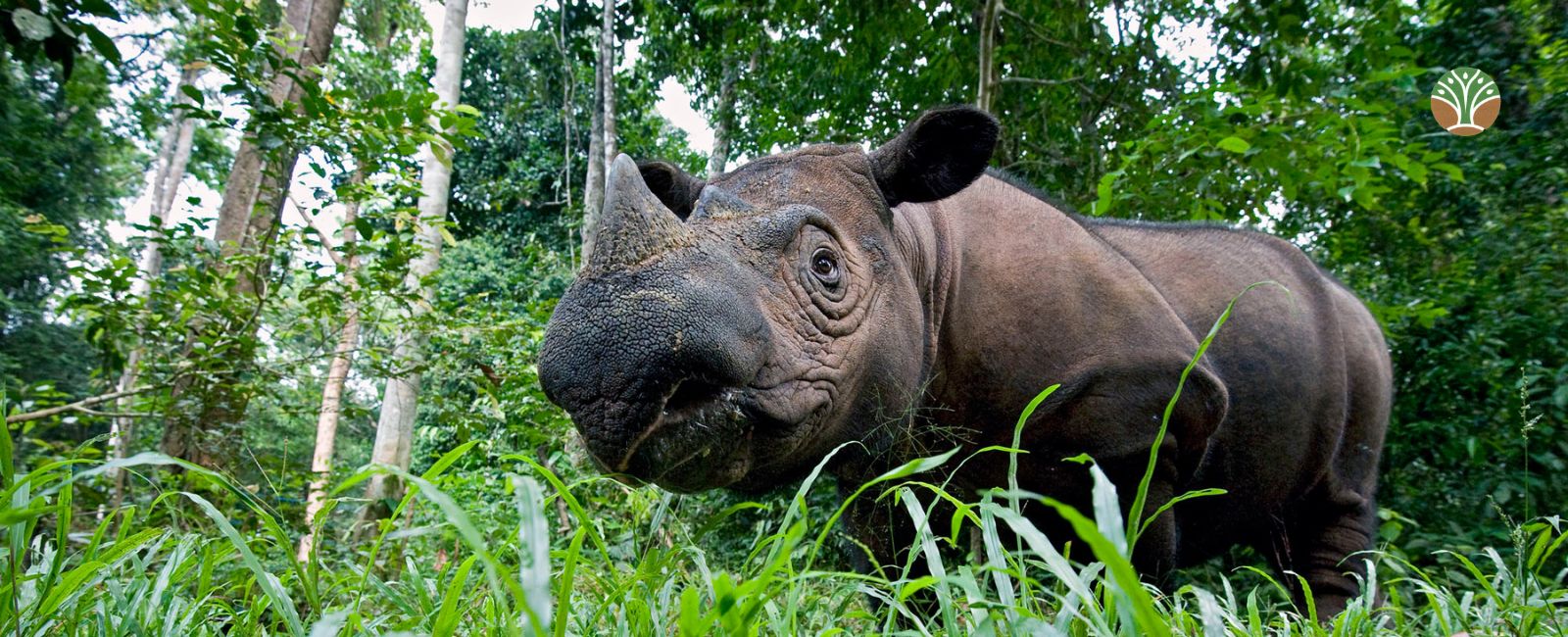
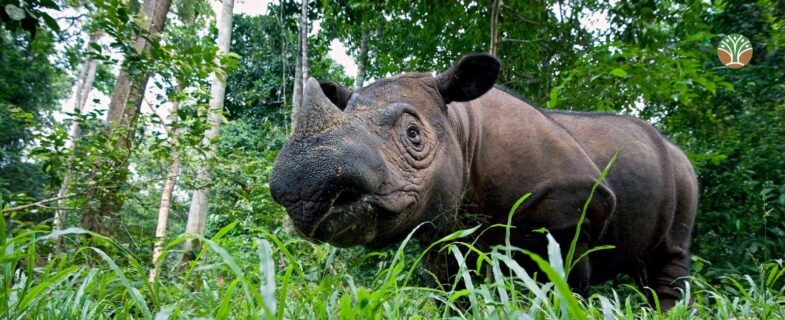
Indonesia: The Sumatran Rhino Sanctuary
All images on this page are courtesy of the Indonesian Ministry of Environment and Forestry.
Sporting reddish locks, an endearing song-like vocalisation and a cuddly face, the Sumatran rhino is one of the earth’s weirdest mammals. Having diverged from other modern rhinos more than 20 million years ago, this strange creature is more closely related to the prehistoric woolly rhino of the last ice age.
Once found throughout much of Southern and Southeast Asia, the first reports of the Sumatran rhino’s disappearance in modern times began as early as 1939. Unfortunately, they vanished completely from Malaysia by the end of 2019, leaving the species restricted to just three locations in Indonesia: Gunung Leuser and Way Kambas National Parks in Sumatra; and a tiny population in Kalimantan, Borneo.
A species so rare that just a handful of people have ever seen one in the wild, the Indonesian government officially states that fewer than 80 individuals remain. However, according to a recent report submitted by the IUCN in preparation for CITES CoP 19, there may be just 34-47 left in the wild. With this incredible species in such a precarious situation, the rhinos at the Sumatran Rhino Sanctuary (SRS) provide a ray of hope for this living fossil.
The problem
Poaching for horn and a loss of habitat have been largely to blame for the species’ population declines. Increasingly, however, the unnaturally small and isolated populations that remain are themselves the greatest threat to the species’ survival. Some of the remaining sub-populations are likely to comprise just two–five animals, with none containing more than 30.
Few in number and lost in vast tracts of dense forest, Sumatran rhinos are struggling to find each other to meet and breed, whilst those that succeed are at risk of inbreeding. As a result, birth rates are incredibly low and simply unable to offset natural deaths.
To make matters worse, females that do not reproduce for extended periods of time are at risk of developing pathologies in their reproductive systems, including uterine tumours and cysts. These can, ultimately, lead to infertility, meaning that even if they do eventually stumble across a potential mate, they are unable to get pregnant. Sadly, this has been a common problem, with more than half of the females rescued from the wild for breeding purposes suffering from such issues.
How is the Sumatran Rhino Sanctuary tackling this problem?
In recognition of the difficulty of protecting wild populations, in 1984 the IUCN/SSC Asian Rhino Specialist Group recommended that a captive breeding programme be developed for Sumatran rhinos. During the next 10 years, 40 rhinos were captured and transported from Southeast Asia to zoos and other facilities, both locally and abroad, with the intention to carefully breed them in captivity. Unfortunately, by 1996, a captive-born calf had yet to arrive and so, that year, the decision was made to develop a breeding centre in Indonesia, the Sumatran Rhino Sanctuary, to accommodate some of the few remaining Sumatran rhinos that were living in zoos around the world.
The long-term aim was to develop a scientifically managed and viable captive population in semi-wild facilities, which, when appropriate, could eventually supply rhinos for reintroduction to the wild. Despite previous setbacks, conservationists, NGOs, scientists, and the Indonesian Government agreed that the best chance of saving the species is to combine the isolated and dispersed wild populations into these facilities. Whilst populations in the wild continue to decline, this managed population is, fortunately, showing promising signs.
Today, all rhinos at the SRS in Way Kambas National Park are heavily protected and live a semi-wild existence, but they are also integral as a research and insurance population for this Critically Endangered species. Thanks to the success of the breeding programme, the SRS has recently doubled in size to allow space for more rhinos. Each rhino boma is approximately 30 acres, providing access to native plant species for food and mud wallows, which the rhinos use for bathing.
The Rhinos at the SRS
Andalas: a male born at the Cincinnati Zoo in 2001 to Emi and Ipuh. He was the first Sumatran rhino born in captivity in 112 years and the first rhino born in the conservation breeding programme. Andalas arrived at the SRS in 2007 and is the father of Andatu and Delilah.
Harapan: a male born at the Cincinnati Zoo in 2007 and full brother to Andalas.
Bina: an elderly post-reproductive female who was caught in the wild in 1991 as part of the original capture programme. Initially, Bina was kept at a zoo in Indonesia before moving to the SRS once it opened in 1998.
Ratu: a female who was caught in the wild near Way Kambas National Park in 2005 after she ventured into a nearby village. She is the mother of Delilah and Andatu.
Rosa: a female who was caught in the wild outside of Bukit Barisan Selatan National Park in 2005 after she became unafraid of humans. She is the mother of the new calf born in March 2022.
Andatu: a male born at the SRS in June 2012 to Andalas and Ratu, and the first Sumatran rhino born in captivity in Indonesia. He later mated with Rosa, resulting in the birth of a female calf in March 2022.
Delilah: the first female calf born at the SRS in May 2016 to parents Andalas and Ratu. She is the most vocal of the rhinos and is renowned for her singing abilities.
Sedah Mirah: A female rhino born in March 2022 and the first third-generation Sumatran rhino born in captivity. Her parents are Rosa and Andatu.
Anggi: A female rhino born on 30 September 2023 and the third calf of Andalas and Ratu.
Indra: A male rhino born on 25 November 2023 and the first calf of first-time parents Delilah and Harapan. Indra’s birth marked the first time that a female Sumatran rhino born in captivity had a calf of her own and was also the first birth to take place without the mother experiencing any miscarriages beforehand.
Saving Sumatran rhinos from the brink of extinction
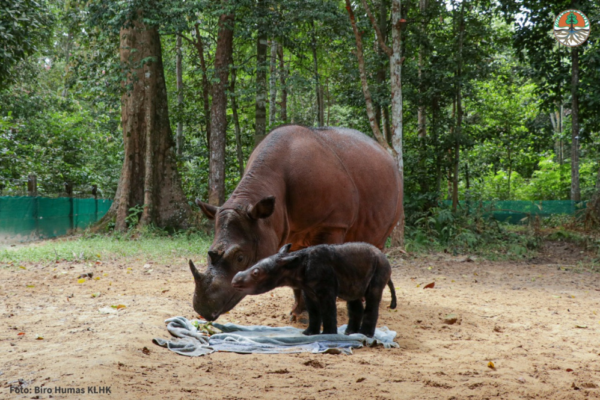
With a new calf born in March 2022, we have renewed hope for the future of this species. © Image courtesy of the Indonesian Ministry of Environment and Forestry.
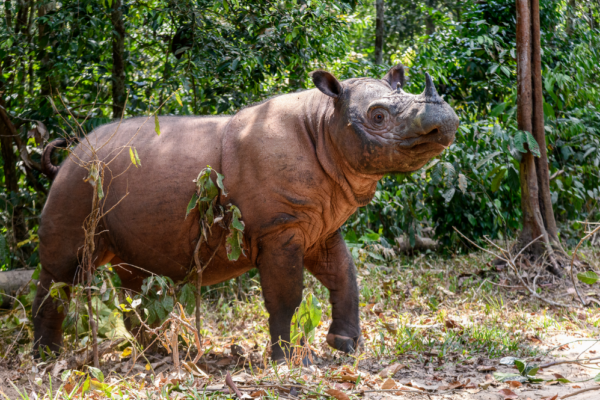
Enjoying a scratch! One of the SRS' rhinos. © Nick Garbutt Photography, Photo courtesy of the Indonesian Ministry of Environment and Forestry.
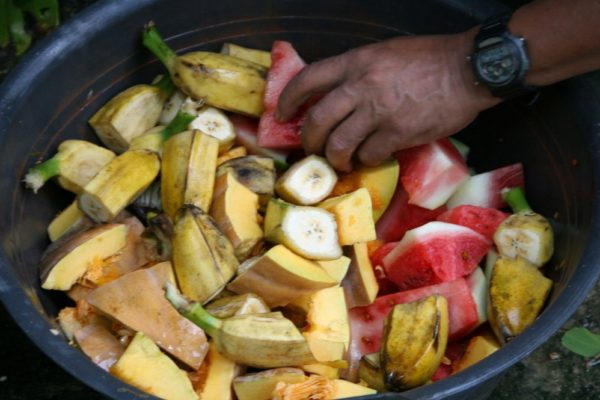
Staff at the Sumatran Rhino Sanctuary provides excellent care for the species. © International Rhino Foundation
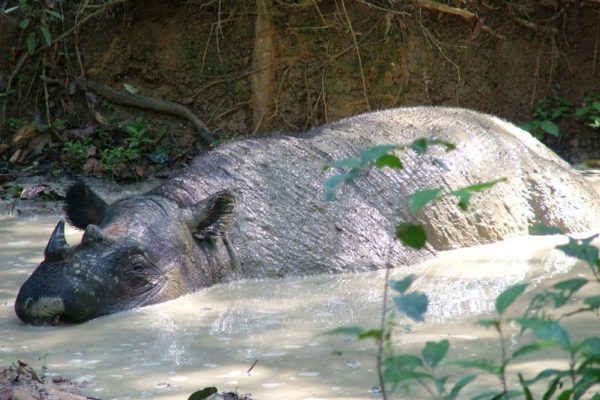
Sumatran rhino Rosa loves wallowing in the mud. © International Rhino Foundation, image courtesy of the Indonesian Ministry of Environment and Forestry.
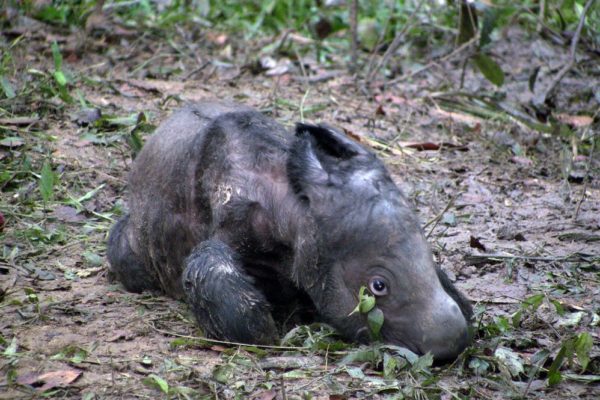
Sumatran rhino calf Delilah was born on 12 May 2016 - a huge milestone for the protection of this Critically Endangered species! © International Rhino Foundation, image courtesy of the Indonesian Ministry of Environment and Forestry.
Our work
Save the Rhino International is a strategic partner of the Sumatran Rhino Survival Alliance and has been supporting the core running costs of the SRS. This includes things like paying for staff salaries, vehicle running costs, veterinary supplies, and food and non-browse nutritional supplements for rhinos. Most recently, our funds have contributed towards doubling the capacity of the SRS for holding and breeding Sumatran rhinos. The new state-of-the-art breeding facility is a major achievement towards saving this species from the brink of extinction.
Hope for the Sumatran rhino might seem like an oxymoron, when faced with reports of declining numbers, habitat fragmentation, and human encroachment. But your donations are allowing us to make a real difference to their future.
After all, rhinos have recovered from the brink of extinction before. The Southern white rhino once numbered fewer than 50 individuals at the end of the 19th Century and recovered – albeit with some heavy poaching during the past decade – to almost 16,000 individuals today. With funds, time and some luck, perhaps we can achieve the same for the Sumatran rhino.
 Protecting Rhinos
Protecting Rhinos
 Reducing Illegal Horn Trade
Reducing Illegal Horn Trade
 Involving Communities
Involving Communities
 Bringing Experts Together
Bringing Experts Together


